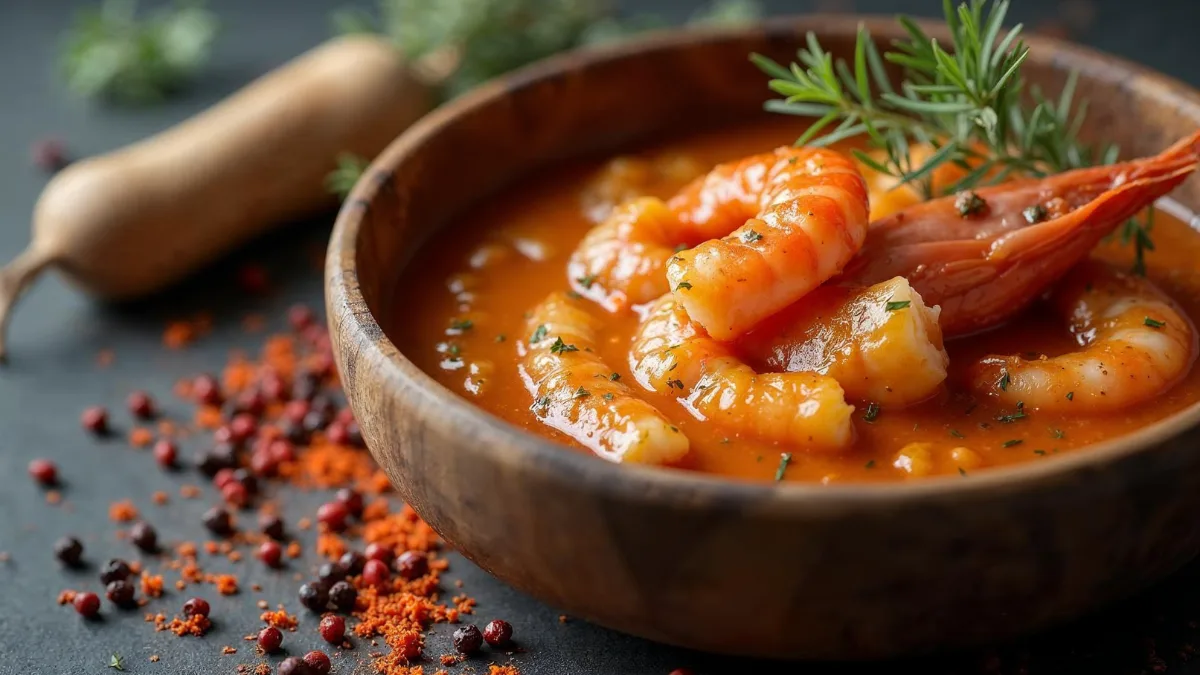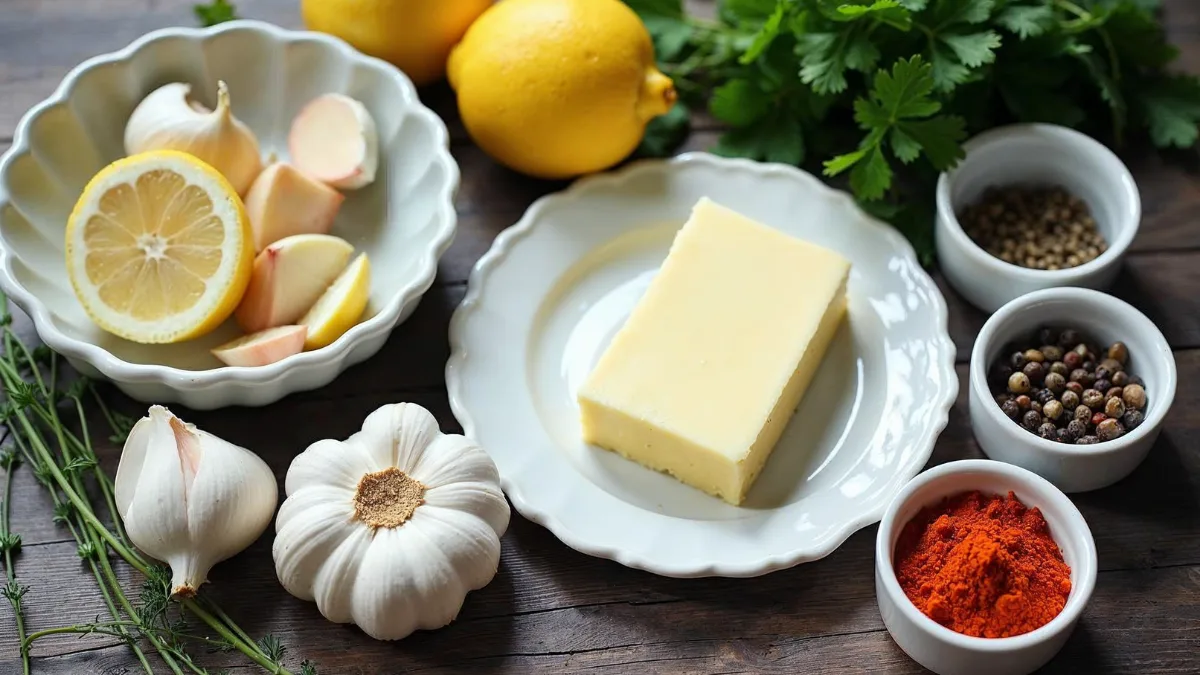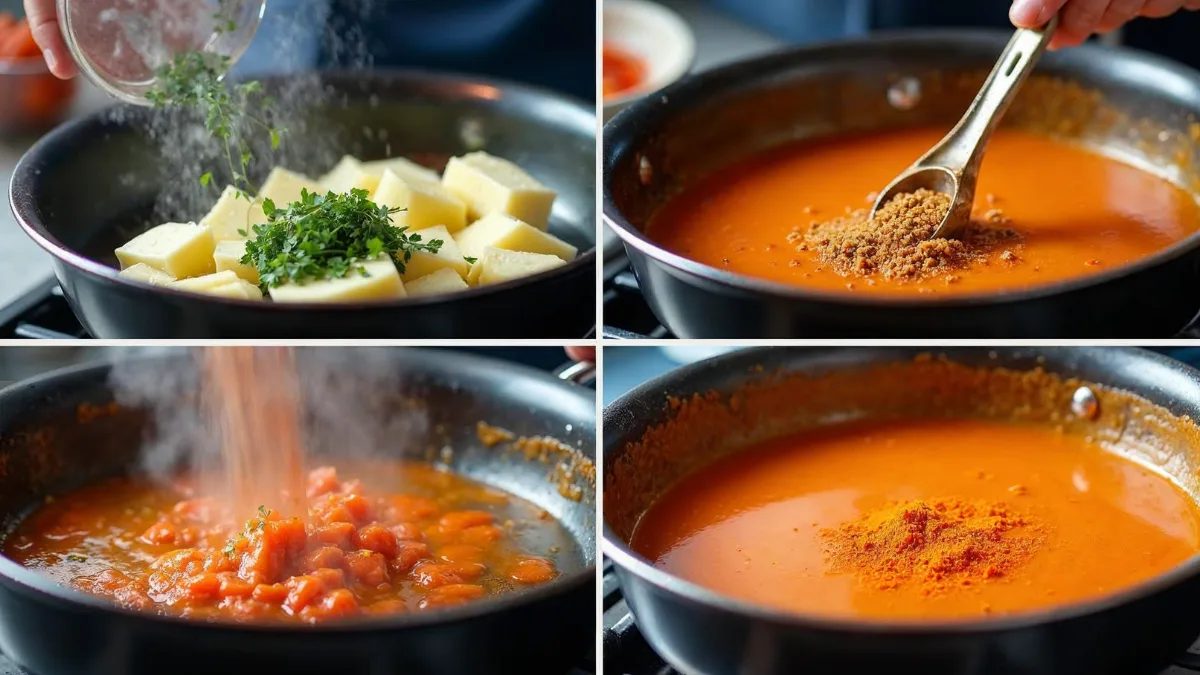I’ll never forget the first time I tried a seafood boil with that rich, flavorful sauce. It was a family gathering, and everyone was digging into crab legs, shrimp, and clams. But what truly set the dish apart was the sauce. It wasn’t just any dipping sauce; it had the perfect balance of spice, garlic, and buttery goodness. As I dipped my shrimp into the sauce, I realized—this is what makes a seafood boil unforgettable. Ever since then, I’ve been perfecting my own version of how to make seafood boil sauce recipe, and let me tell you, it’s a game-changer.

If you’ve ever wondered how to make seafood boil sauce that’s both flavorful and easy, you’re in the right place. The beauty of a great seafood boil sauce is its versatility and depth of flavor. Whether you’re hosting a backyard seafood feast or just treating yourself to a cozy dinner, this sauce will elevate your seafood like never before. Let’s dive into this easy, yet incredibly tasty recipe that will soon become a staple in your kitchen!
Why You’ll Love This Seafood Boil Sauce Recipe
This seafood boil sauce recipe is a true crowd-pleaser, and here’s why. First, it brings a burst of flavor that perfectly complements any seafood. With its balance of spice, buttery richness, and a hint of garlic, it transforms simple ingredients into a gourmet experience. What’s more, it’s incredibly easy to make. In just a few steps, you can have a sauce that rivals those from your favorite seafood restaurants. Not only is it delicious, but it’s also versatile. You can adjust the heat level to suit your taste, making it perfect for everyone. Plus, it’s an excellent way to elevate your seafood dishes without spending hours in the kitchen. Whether you’re a seafood lover or a newbie, this recipe will soon become a staple in your kitchen!
Ingredients for Seafood Boil Sauce Recipe
To create the perfect seafood boil sauce, you’ll need the following ingredients. Each one plays a key role in bringing out that signature rich, buttery flavor.

- 1 cup of unsalted butter – Use unsalted butter for control over the seasoning. You can substitute with ghee for a deeper flavor.
- 4 cloves garlic, minced – Fresh garlic works best for a bold, aromatic taste. You can use garlic powder if needed, but fresh is ideal.
- 2 tablespoons Old Bay seasoning – This classic seafood seasoning adds depth and flavor. You can adjust the amount to your taste.
- 1 tablespoon paprika – For color and a mild, smoky flavor, use regular or smoked paprika.
- 1 teaspoon cayenne pepper – Adjust the heat level to your preference. This adds spice and a little kick.
- 1 tablespoon lemon juice – Fresh lemon juice balances the richness with a tangy brightness.
- 2 tablespoons hot sauce – Choose your favorite hot sauce for added flavor and heat.
- 1 tablespoon Worcestershire sauce – This adds a savory, umami depth to the sauce.
- 1/2 teaspoon salt – Sea salt or kosher salt is best for seasoning. You can add more as needed.
- 1/2 teaspoon black pepper – Freshly ground black pepper enhances the overall flavor of the sauce.
These ingredients combine to create a flavorful seafood boil sauce that enhances the natural taste of your seafood. Each component plays a role in giving the sauce its signature richness and complexity.
How to Make Seafood Boil Sauce
Making the perfect seafood boil sauce is simple and quick. Follow these easy steps to achieve that rich, buttery flavor.

- Melt the butter
In a medium saucepan, melt 1 cup of unsalted butter over medium heat. Stir occasionally to prevent burning. - Sauté the garlic
Add 4 minced garlic cloves to the melted butter. Sauté for 1-2 minutes until fragrant. - Add seasonings
Stir in 2 tablespoons Old Bay seasoning, 1 tablespoon paprika, 1 teaspoon cayenne pepper, and 1/2 teaspoon salt. Mix well. - Pour in liquids
Add 1 tablespoon lemon juice, 2 tablespoons hot sauce, and 1 tablespoon Worcestershire sauce. Stir until combined. - Simmer the sauce
Let the sauce simmer for 2-3 minutes to allow the flavors to meld together. Keep stirring occasionally. - Taste and adjust
Taste the sauce and adjust seasonings to your liking. Add more salt, pepper, or heat if needed. - Serve the sauce
Pour the seafood boil sauce over your cooked seafood or serve on the side for dipping.
Pro Tip: For a thicker sauce, let it simmer longer, or add a splash of cream for extra richness.
How to Store Seafood Boil Sauce
Properly storing your seafood boil sauce ensures it stays fresh and flavorful for later use. Here’s how you can keep it for future meals.
Refrigerating Seafood Boil Sauce
To refrigerate leftover seafood boil sauce, let it cool completely to room temperature first. Then, transfer it to an airtight container. Store it in the fridge for up to 3-4 days. When you’re ready to reheat, simply warm it up on the stove over low heat, stirring occasionally. If the sauce thickens too much, add a little water or extra butter to reach your desired consistency.
Can You Freeze Seafood Boil Sauce?
Yes, you can freeze seafood boil sauce for longer storage. To do so, allow the sauce to cool completely before pouring it into a freezer-safe container. Be sure to leave some space at the top for expansion. It can be frozen for up to 2-3 months. To thaw, place it in the fridge overnight, or reheat it directly on the stove over low heat, stirring frequently. If needed, add a bit of butter or broth to restore its original texture.
By following these storage tips, you can enjoy your seafood boil sauce whenever you crave that rich, buttery flavor!
Serving Suggestions for Seafood Boil Sauce
This seafood boil sauce is incredibly versatile, making it the perfect accompaniment for a variety of dishes. Whether you’re hosting a casual family dinner or a festive seafood feast, here are some creative and practical serving ideas.
Pairing Seafood Boil Sauce with Seafood
Naturally, this sauce is ideal for a classic seafood boil. Serve it over shrimp, crab, lobster, or clams for an irresistible combination. You can also drizzle it over grilled fish or steamed mussels. The rich, buttery sauce complements the delicate flavors of seafood beautifully. For a fun twist, serve individual dipping bowls of the sauce alongside your seafood for a more interactive experience.
Serving with Sides
Pair your seafood boil sauce with some tasty sides. It goes wonderfully with garlic bread, roasted potatoes, or corn on the cob. For a lighter option, serve it with a fresh garden salad or steamed vegetables. The creamy, spicy sauce adds a burst of flavor to simple sides.
Creative Variations for Special Occasions
For a festive touch, serve your seafood boil sauce in a large bowl as the centerpiece of a seafood buffet. You can also make it extra special by adding herbs like fresh parsley or dill. If you’re cooking for a crowd with varying spice tolerances, try making a mild version of the sauce for those who prefer less heat. Another option is to elevate the sauce by mixing in a splash of white wine for added depth.
By experimenting with these ideas, you’ll find endless ways to enjoy your seafood boil sauce, making every meal memorable!
Mistakes to Avoid When Making Seafood Boil Sauce
While making seafood boil sauce is fairly straightforward, there are a few common mistakes that can affect the flavor and texture. Here are some errors to watch out for and how to avoid them.
1. Overheating the Butter
One common mistake is overheating the butter. When melting butter, always use medium heat and stir occasionally to prevent burning. Overheating can cause the butter to separate, leading to a greasy sauce.
2. Using the Wrong Seasonings
Another mistake is not using enough seasoning or using incorrect types. Be sure to use Old Bay seasoning, paprika, and cayenne pepper as directed, adjusting to taste. Substituting these ingredients can change the overall flavor profile and lead to a bland sauce.
3. Skipping the Tasting Step
It’s easy to forget to taste your sauce as it cooks, but this is crucial! Always taste your sauce and adjust the salt, pepper, and heat levels as needed. You may find that a little extra hot sauce or a squeeze of lemon can make a big difference.
4. Not Allowing Enough Simmer Time
Finally, rushing the simmering process can lead to a less flavorful sauce. Allow the sauce to simmer for at least 2-3 minutes, so the spices can fully meld together. This is key for achieving that rich, deep flavor.
By keeping these tips in mind, you can ensure that your seafood boil sauce turns out perfectly every time!
Nutritional Breakdown of Seafood Boil Sauce Recipe
Here’s the nutritional breakdown for the Seafood Boil Sauce Recipe. The values are estimates based on a serving size of 2 tablespoons of sauce, assuming standard ingredients used in the recipe.
| Nutrient | Amount per Serving (2 tbsp) |
|---|---|
| Calories | 180 kcal |
| Total Fat | 18g |
| Saturated Fat | 11g |
| Trans Fat | 0g |
| Cholesterol | 35mg |
| Sodium | 380mg |
| Total Carbohydrates | 3g |
| Dietary Fiber | 0g |
| Sugars | 1g |
| Protein | 1g |
| Vitamin A | 15% of Daily Value |
| Vitamin C | 4% of Daily Value |
| Calcium | 2% of Daily Value |
| Iron | 2% of Daily Value |
Dietary Notes:
- Gluten-Free: This recipe is naturally gluten-free.
- Dairy: Contains dairy (butter), which can be substituted with non-dairy alternatives like ghee or plant-based butter.
- Spicy: The recipe has a mild-to-moderate level of spice, which can be adjusted based on preference.
Keep in mind that the nutritional values may vary based on specific ingredient brands and quantities used, especially when altering the spice levels or adding extras like wine.
FAQs
What Sauce is Best for Seafood?
The best sauce for seafood depends on personal preference, but a rich, buttery garlic sauce is a popular choice. Other favorites include lemon butter sauce, tartar sauce, or a spicy seafood boil sauce. For an extra kick, you can use cocktail sauce or a creamy remoulade. Each of these complements the natural flavors of seafood, adding depth and richness to your dish.
How to Thicken Up a Seafood Boil?
If you want to thicken up your seafood boil, there are a few methods to try. One of the simplest ways is to let the broth reduce by simmering it for a longer period, which will naturally thicken the liquid. Another option is to add a thickening agent like cornstarch or flour, mixed with water, to achieve the desired consistency. Additionally, you can incorporate some mashed potatoes or a bit of bread to thicken the broth while adding more flavor.
Is Seafood Boil Cajun or Creole?
A seafood boil can be influenced by both Cajun and Creole flavors, but it typically leans more toward Cajun seasoning. Cajun cuisine is known for its bold spices, garlic, paprika, and cayenne, which are often used in seafood boils. However, some Creole recipes may use a slightly milder blend, often including tomatoes and other vegetables. Both styles offer a rich, flavorful foundation, but the heat and complexity of Cajun flavors are more commonly associated with seafood boils.
What’s in Zatarain’s Seafood Boil Seasoning?
Zatarain’s seafood boil seasoning typically contains a blend of spices and herbs designed to enhance the flavor of seafood. The main ingredients include salt, paprika, cayenne pepper, garlic, mustard seed, bay leaves, and lemon peel. Some versions may also contain thyme, coriander, and red pepper for added heat and complexity. This seasoning mix is perfect for infusing your seafood boil with a savory, spicy kick.
Conclusion
In conclusion, this seafood boil sauce recipe is a must-try for any seafood lover. With its rich, buttery flavor, balanced with a hint of spice and garlic, it will transform your seafood dishes into something truly special. Whether you’re hosting a party or enjoying a quiet dinner, this sauce brings versatility and depth to a variety of seafood. Furthermore, it’s easy to prepare and can be adjusted to suit your taste preferences, making it perfect for all occasions.
By following this simple recipe, you’ll have a flavorful sauce that enhances the natural sweetness of shrimp, crab, and other shellfish. And remember, the sauce can be stored or frozen for later use, making it a great option for meal prep.
So, why not give it a try? We’d love to hear how it turns out! Share your results or explore more delicious recipes on our blog, including leftover spaghetti sauce recipes. Enjoy!




